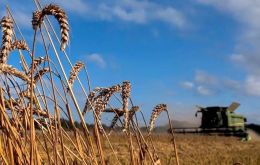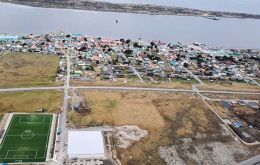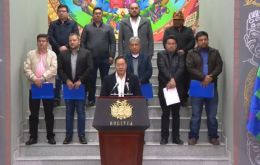MercoPress. South Atlantic News Agency
Economy
-
Wednesday, June 4th 2025 - 10:25 UTC
Significant growth in Paraguayan exports reported

Paraguayan exports have recorded significant improvements this year, according to reports released in Asunción this week.
-
Tuesday, June 3rd 2025 - 10:38 UTC
Chavista regime cracks down on black market dollar handlers

Venezuelan authorities arrested 15 men and 10 women for their alleged involvement in manipulating the black market dollar, impacting the economy. The suspects, including operators, managers, liquidity providers, developers, programmers, and payment receivers, handled 18 websites setting parallel dollar prices, causing economic distortions. Some of these portals illegally captured funds without banking authorization, it was explained.
-
Friday, May 30th 2025 - 10:23 UTC
Falklands, changes to Land Values and Service Provision Policy approved

Changes to the Falkland Islands Government’s (FIG) Land Values and Service Provision policy were agreed by Executive Council this week. The Land Values and Service Provision policy sets out how FIG calculates the price it sells serviced plots, the price for un-serviced land and details the contribution to future servicing.
-
Wednesday, May 28th 2025 - 21:08 UTC
Uruguay keeps Monetary Policy Rate unchanged at 9.25%

The Central Bank of Uruguay (BCU) decided to maintain the Monetary Policy Rate (MPR) at 9.25%, the Monetary Policy Committee (Copom) and BCU President Guillermo Tolosa announced. This unanimous decision seeks to strengthen the contractionary bias of monetary policy to continue the disinflation process and align inflation expectations with the target of 4.5% annually.
-
Wednesday, May 28th 2025 - 20:41 UTC
Azul files for Chapter 11 bankruptcy protection

Brazil's Azul Airlines, the country’s third-largest carrier, filed for Chapter 11 bankruptcy protection in a New York court on Tuesday to restructure R$ 31.35 billion (US$ 5.56 billion) in debt. The filing follows a 50.3% debt increase in Q1 2025, driven by currency volatility, high US interest rates, and supply-chain issues, including Pratt & Whitney engine recalls resulting in grounded aircraft. Additionally, partnerships with ACMI providers like EuroAtlantic faced legal challenges from Brazilian labor unions over foreign crew usage.
-
Monday, May 26th 2025 - 10:04 UTC
Paraguay seeks to become logistics hub for South America

Paraguay last week launched the upcoming Expo Logistics 2025 to be held on June 11 and 12 at the South American Football Confederation facilities in Luque. At the event, the South American country will be positioning itself as a regional hub by leveraging its strategic location and enhancing its transportation infrastructure, Vice Minister of Trade and Services Rodrigo Maluff said while announcing initiatives to modernize the Paraguay-Paraná waterway to connect trade from Bolivia and Brazil’s Mato Grosso regions, reducing cargo transfer times to markets like Southeast Asia by up to 40%.
-
Saturday, May 24th 2025 - 10:39 UTC
Bolivian gov't announces measures to curb ongoing crisis

The Bolivian Government of President Luis Arce Catacora announced Friday a series of measures to tackle the rise in food prices, fuel shortages, dollar scarcity, and the declining purchasing power of the Bolivian currency.
-
Thursday, May 22nd 2025 - 10:47 UTC
Paraguay strengthens ties with Japan through Peña's visit

Japan has elevated Paraguay to a “strategic partner” status during President Santiago Peña's visit, marking a century of diplomatic relations. This strengthens ties through trust, cooperation, and mutual development. Japan approved a US$ 240 million credit for transformative infrastructure projects in the South American country, plus visa-free entry for short-term Paraguayan travelers and a political consultation agreement to deepen cooperation.
-
Wednesday, May 21st 2025 - 10:28 UTC
Milei highlights Argentina's prosperous future

During his speech at the AmCham Summit 2025 in Buenos Aires, organized by the U.S. Chamber of Commerce, President Javier Milei celebrated his party's recent electoral victory in the Autonomous City and promised that inflation would be eliminated by mid-2026.
-
Wednesday, May 21st 2025 - 08:05 UTC
Brazil’s command of soy markets tested by record crops and Argentina

Despite a record grains and oil seeds harvest, Brazil’s soybean trading has slowed significantly, because of the mismatch between buyers’ prices and suppliers’ expectations, points out Globo Rural, an agribusiness site.
